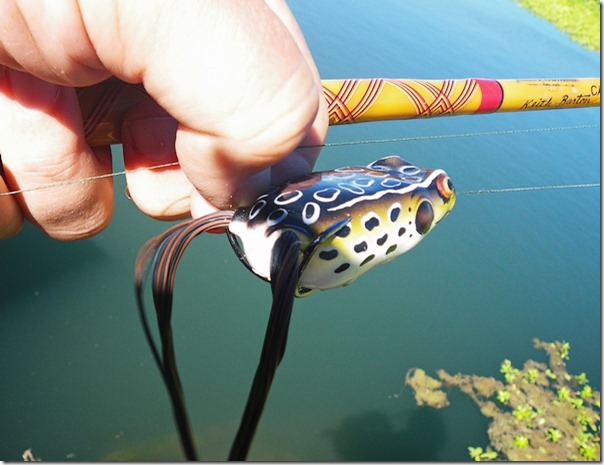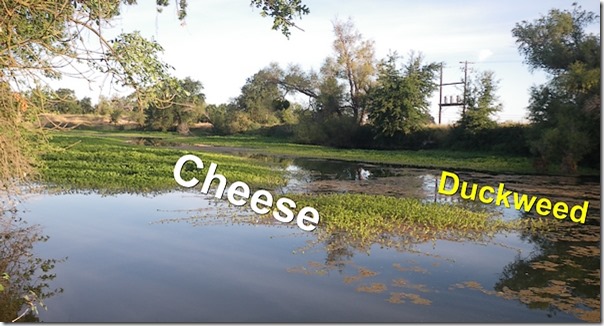The problem with declining water levels and the increase in exposed bank is finding out the floral equivalent of the Common Cockroach, the Blackberry vine, actually thrives in drought.
Drought is supposed to be the Great Equalizer, and any thoughts of a soft landing when skidding down the bank, is quickly dashed by the gaping holes in waders, the streaks of blood on palm and exposed flesh, and the sickening reality that cockroaches thrive in adversity, and are immune even to my curses.
Drought and receding water levels has made the journey between foot path and water’s edge uncertain, and in many areas, outright daunting. Even if you’re lucky enough to gain the water’s edge upright and intact, back casts are nearly impossible due to the height of the exposed banks and their liberal cover of fly eating foliage.
Skinned knees and shredded waders are now commonplace, and I’m tired of fragile breathables and shredding heavy plumber gear, and have opted to swap out my gear entirely.
As shallow tends to be lifeless, I’ve been bypassing my normal haunts in favor of anything deep that hasn’t had the oxygen boiled out of it, and may host a few fish willing to eat.
Deep water means lakes and impoundments, and neither plays to the strong suit of fly fishing – given how poorly our gear sinks. Water less than ten foot deep is about the limit of our fishing, and while that makes us productive in the shallow edges of bays and inlets, we rarely can compete with other tackle types when the fish are deeper still.
My “exploration” rig is now a casting rod and weedless frog – and hiking boots instead of fragile waders. A 5’ bait casting rod threads through Blackberry brambles more efficiently than a 9’ fly rod, and most of my overly warm water is covered in algae and weed, so my weedless frog is a huge upgrade from flies.

More importantly, I can wing the frog from safety – and not have to fight my way down to the water’s edge to gain casting space. (Note the double hook riding up onto the back of the frog, imparting complete immunity from fouling on weeds and “cheese” mats.)
“Cheese” and wind-driven duckweed compound the fishing even further. Drought has reduced the water volume and summer temperatures cause the floating mats of vegetation (Cheese) to bloom sooner – and swallow entire waterways. Afternoon breezes push the floating duckweed into thick mats on the windward side of the impoundment – and flies simply bounce off the vegetation or are immediately fouled and useless.

Normally this envelopment occurs in August, but the the absence of Winter and the unseasonably warm Spring have give the vegetation a couple months head start – and I’m running out of open water.
In the above photo, I can cast the frog over the Cheese and walk it back over the mat of vegetation without fear of snagging anything.
This spot yielded a couple of “tail slaps” from an unknown species, and in between picking my way through thickets of Blackberry, managed to observe one lonesome 3” bluegill along with what appeared to be something feeding on the vegetation, which I assumed was carp.
I returned the following morning with fly gear and the duckweed had closed the open waterways above. I managed a bit of fishing on the far side around the downed timber, but that was fruitless given the far bank is a ten foot drop to deep water.
While I had high hopes for Largemouth, this may be a bluegill only area – and they may be quite small to boot.
Dyneema and the Demise of Monofilament
The interesting bit of switching to conventional gear is learning of the changes in the tackle since last I tossed a plug in anger. The biggest change being Dyneema braid, which has largely replaced monofilament line in both casting and spinning gear.
The new braid is a learning experience given that 30lb test has the diameter of about 8lb mono. That means an unwary angler can shatter his rod if he’s not pulling straight back to free a snag, or could slice fingers if he were a damn fool and wrapped it around anything but a stick.
This type of braid possibly brings new life to older, smaller capacity fly reels – as you can fit a hundred yards of 30lb or 40lb test, where Dacron’s thickness might not make backing possible.
The same line is used on spinning reels as well. Most of the spool is wound with the equivalent diameter monofilament, and the last 100 yards with the braided line.
I re-equipped my conventional rod with 10 pound monofilament backing and 100 yards of braided Dyneema rated at 30lb test. The mono backing lessens the strain on the spool the higher rated line is capable of adding. This material requires an Albright knot to join the mono to the braid, and a Palomar knot for tying lures and flies onto the end. The line cuts itself quite easily as if using conventional knots like the Clinch, or similar.
It’s a bit heady to drop the lure into the brush on the far side on an errant cast, rip the branch off the tree, then tow the entire mass across the pond to be sorted out without fear of harming lure or line.
Us fly fishing types are not used to announcing ourselves with such environmental authority …
… and if you’ve not bought bass tackle in awhile, you’ll understand the importance of these new braids. Lures cost $7 –$20 each, and it’s my understanding that hard core bass fishermen use 65lb test braid to ensure the hook straightens and the lure returns home safely.
What’s really needed is a weave of that same braid covering for my waders. While it’s nice to be dry and absent a pant’s leg full of cold water, it would be nicer to navigate both snakes and thorn bushes in full Kevlar.

Well, I see hangin’ with the bass has ruined you..gear chuckin’, teen age lust for horsepower and cheap beer (wait,that’s always been around) but I do see the cold cynical fact of ya gotta do what ya gotta do….Up here in Wastafarian State the snowpack is gone and by August the rivers will be too. But the Pinks will be running this year,giving us scenes of combat fishing and snagfests like the Kenai…for fish that some say are better cat food than grilling
I have to admit that once astride that V-8 I was tempted to give any bank fishing fly wielder the Big Finger (unfortunately there weren’t any visible, so no one saw my Benedict Arnold pose ..)
Finding out that my faux purist outlook on fishing was just that – did make my day. Each time I crack Fly Fisherman I fear I’ve become one of those unsmiling (and completely insufferable) fellows depicted within, and my quick adaptation to casting gear and back proved I was the same kid that got into the sport because he loved it so …
No apologies to my Brother anglers, nor offense meant.
I can remember as a kid fishing with a friend and his dad had a bait casting reel. I was so envious of his ability to cast it. It seemed to make my Zebco 202 a Pinto and his Abu Garcia a Corvette. It’s one of the lasting memories of my youth.
No worries,KB…..Since we don’t have Tom to kick about anymore (ensconced in the TU World Domination HQ) just gotta give you guff….As the temps here in Puget Sound reach the nineties (yes, a mild late spring day in the Central Valley) a fast run in a bass boat would be nice……